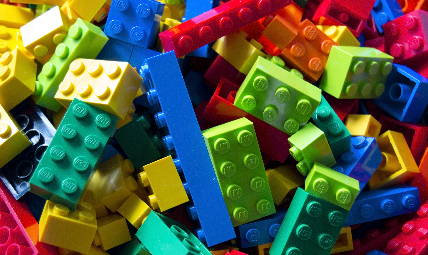Case study: The Lego Foundation
Generations of children have enjoyed building things with LEGO bricks. The iconic plastic bricks have been used to build everything from a harpsichord that actually plays, to a replica of Charles Babbage’s difference engine. The Danish company is still family-owned, and is the world’s fourth-largest manufacturer of toys.
The LEGO Foundation funded the ‘Learning through play’ project (through the LEGO Learning Institute); a non-profit foundation aiming to empower children to learn through play, by supporting initiatives and international academic partners, which conducts research around play, learning, creativity and child development.
Dr David Whitebread, Senior Lecturer in the Faculty of Education, has been a member of the Institute since 2010. His work with the LEGO Foundation was facilitated by the Consultancy Services team at Cambridge Enterprise.
Dr Whitebread has contributed to two major reports during his time as a consultant at the LEGO Foundation: the first was a review of current research on the importance of play in childhood development, and the second was a report on the future of learning.
Due to his ongoing consultancy work with the company, the LEGO Foundation has funded two of Dr Whitebread’s PhD students, who are researching how children learn through constructive play – building larger objects out of smaller ones.
Between the ages of four and six, children often talk to themselves when engaged in constructive play, a phenomenon known as private speech. At that age, children cannot yet think in their heads, and private speech is a step toward developing that ability.
Private speech mostly disappears around the ages of seven or eight, when children are able to think internally. However, it can be seen in older children and adults, who will often talk themselves through a challenging situation. “Playing with a toy like LEGO bricks often generates that kind of talk,” says Dr Whitebread. “Children enjoy setting challenges for themselves. Very often they’ll learn a lot from that sort of play.”
There are vital connections between play, learning and creativity. Free play, or play which is open, experimental and with little apparent educational content, has been shown to be one of the best ways to stimulate learning and creativity.
The increasing desire to quantify all aspects of child development through frequent testing in schools means that, too often, play is highly structured and focused on achieving specific learning goals.
Societal changes in the coming decades will most certainly affect the perception of the role and value of play. Says Dr Whitebread, “The problem is we’re educating children now to go into the world in 20 years, and none of us know what that world’s going to look like.”
Like to know more about this project?
You can read about how the work with the LEGO Foundation has developed since this case study was published.




